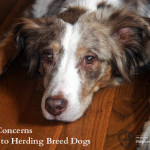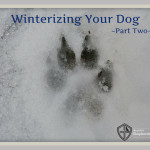Three Easy Steps to Protect Your Dog from Deadly Toxins
Deadly Toxins Are Closer Than They Appear

Many of us know about common household pet poisons like mouse bait, antifreeze and chocolate. But did you know that our carpets, grassy lawns and even our pet's bedding are also teeming with potentially deadly toxins? Every day we unknowingly expose our pets to chemicals that can make them sick and possibly even shorten their lives, but thankfully we can do something about it. For a healthier life together, minimize your dog's exposure to toxins by following these three important steps:
Get Educated: How Do Dogs Absorb Toxic Chemicals?
Every day our dogs can be exposed to over 80,000 different chemicals because they groom themselves with their tongues and don't wear shoes. The book Pukka's Promise: The Quest for Longer Lived Dogs, goes into more detail, and in his interview with the National Public Radio show “Living on Earth,” author Ted Kerasote explains:
“Dogs are smaller than adult humans, and just like small children they receive a greater dosage of the environmental toxins around us per unit of body weight than do we. Dogs also are on the ground. They live on ground. They take in the world through their noses so they're breathing in chemicals that we don't breathe in. They also walk around bare-pawed on city streets, and on lawns that have been sprayed with herbicides. And when they get home at night, they don’t take a shower, as do we. They lick their paws, they lick their fur, further ingesting these chemicals.”
Kerasote's book dives into detail about over-exposure to man-made chemicals, vaccines and food hazards. Read it and you'll think twice when you're playing a game of fetch on a lush grassy lawn or tossing a tennis ball with your pal.
Look Around: There Are More Deadly Toxins in Your Home than You Realize
Congratulations if you're already taking steps to keep common household toxins away from your pets. The next step to a healthier, greener life together is identifying less obvious toxins in everyday items like:
Carpeting, Pet Beds and Food Bags
Paper pet food bags, pet beds and our own carpets can repel stains because they're made with a chemical known as PFCs or Perfluorinated compounds. PFCs are linked to a wide array of urgent health concerns and although they're more restricted than ever in the U.S., new legal variations of the same chemical are everywhere. Start reducing PFCs by avoiding products made with grease and stain-repellent qualities. Get rid of plastic pet food containers and bowls, and choose eco-friendly pet beds.
Lawns
Luscious lawns are a summertime treat often lurking with toxic lawn chemical residue. In a study conducted with Purdue University, Scottish Terriers were found to have a higher incidence of bladder cancer than other breeds after exposure to lawn chemicals, which can cling to grass for many days. While the Terrier is genetically more prone to bladder cancer, other breeds are still soaking up the toxins, potentially causing irreversible damage. These poisons are linked to “cancer and other health risks such as cell damage, hormonal interference, and reproductive problems,” according to the NRDC. According to Mother Nature News, “Some common herbicides — specifically 2,4-dichlorophenoxyacetic acid (2,4-D), 4-chloro-2-methylphenoxypropionic acid (MCPP), and dicamba — remained detectable on grass for at least 48 hours after application, and the chemicals persisted even longer on grass under certain environmental conditions.”
You can take measures to avoid herbicides on your own lawn, but you can't be sure what your local parks and rec department is using. Minimize your dog's exposure to toxic lawn chemicals by wiping paws with soapy water after a play session.
Toys
Ironically enough, the very things that are supposed to make our pets happy are one of the biggest sources of deadly toxins in their lives. Many popular vinyl pet toys are teeming with phthalates, a toxic additive so harmful that it's banned from human child products in the European Union. Thankfully, eco-conscious pet toy manufacturers are making healthier, less toxic replacements. In this Guild article about eco-friendly pet toys, you'll find healthy playtime alternatives.
Demand Better: Make a Big Impact with Small and Consistent Steps
Fighting the flood of toxic chemicals may seem futile, but the growing marketplace for organic, eco-friendly pet products is proof that pet parents like us are demanding and getting healthier pet product alternatives. Vote with your money and choose pet products that you can feel good about giving to your best friend.
Article By: Rene Agredano






